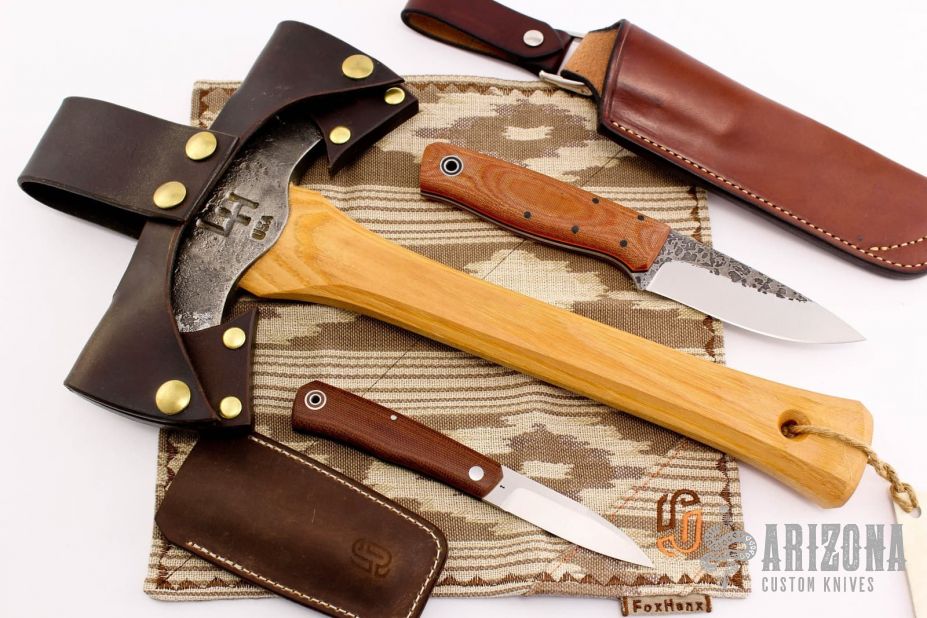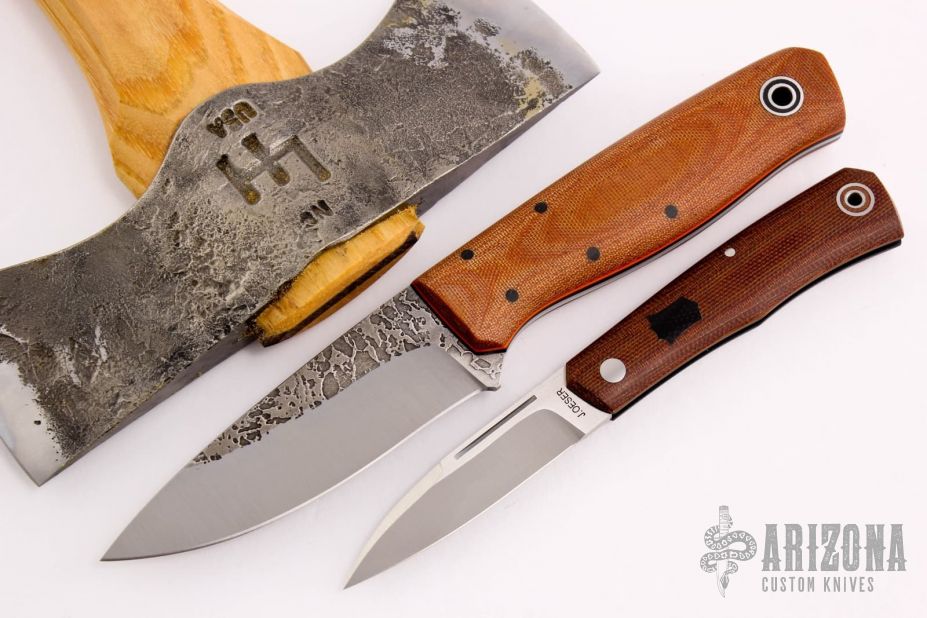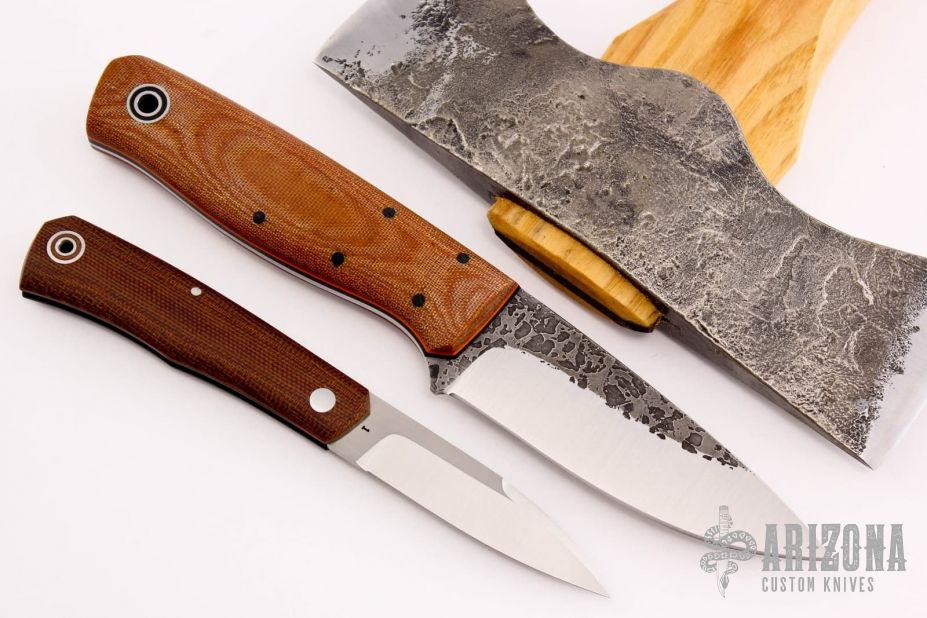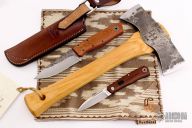Oeser/Fiddleback/Hoffman Bushcraft Trio
Price $2,195.00
Product Details
Weight (oz) 32
Source From maker
Additional Specs
About the Maker
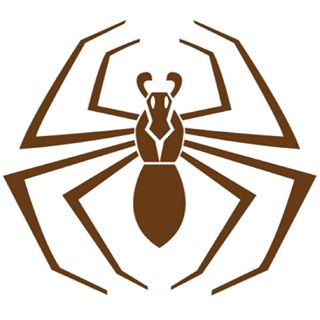
Fiddleback Forge
Hi, I am Andy Roy, the maker at Fiddleback Forge, LLC. I started making knives in 2007, and went full time May 1, 2009 when I got laid off of my last engineering position. I consider myself a toolmaker, and much of the focus of my work is in the handle. I strive to make the most comfortable handle you?ve ever held. It is important to me that you can hold the knife in many positions comfortably and do hard extended work with the blade. I also think it is important for the handle to index the knife in your hand, so that no matter how you hold it, you know where the edge is without having to look. I use a variety of steels, and my favorite grinds are convex, and Scandi. In 2010 I spent a lot of time developing a finish treatment for the flats of my knives that I call 3D Spalted Steel. It adds a unique character to my blades, and I think it complements the refined handle work well. I am very excited to be working with Arizona Custom Knives, and hope you enjoy the Fiddleback Forge knife you buy from them.
Hoffman, Liam Cole
Growing up in the rural Blue Ridge Mountains of North Carolina I was accustomed to playing outside in the woods and creeks, opening up my mind to creativity. I have always been very hands-on and creative. I would make paper dye with wild violets and mold bowls from clay dug out of the creek banks. Later on I taught myself how to macramé and learned the art of Bonsai. My mother and her family are very artistic and creative with design. My father is a hard working farmer. I believe I have both these attributes, and that when these traits are combined they fit perfectly the description of a blacksmith: hard work mixed with creative spirit. I began blacksmithing in the fall of 2008 at the age of thirteen, starting out with nothing but a pit fire and a trailer hitch for an anvil. Over the last few years I?ve worked my way up by purchasing new equipment one machine at a time and learning about the craft and science of moving steel. My parents have been extremely supportive in helping me pursue my passion. They gave me a push start by building a small brake drum forge for my fourteenth birthday. My dad took on the project of building my 200 square foot shop over a two-year period. Once this foundation was established, I had my business well under way before graduating from high school. I always get asked how and why I got started in blacksmithing at the age I did. One might think that I saw a blacksmith at a local fair or read about it in school and ran home to try it out. There was no conscious reason why I started, it's just called being a 13 year old boy. There is nothing else to it: It feels innate to me, like I was born to do it. Once I started heating up and hammering on steel, I knew it felt right. Only afterward did I discover what I was doing was called blacksmithing. Today I?m nineteen years old and an accomplished blacksmith with six years of experience. My work has sold to buyers and collectors internationally. I believe that high school hindered me in a way, since I discovered my vocation at such a young age. Getting an education is imperative, but at the same time it felt nearly obsolete for me to take honors classes. I was already working 35 hours a week after school and on weekends, making both school and work life challenging. Add to that several years in Boy Scouts, achieving Eagle Scout at seventeen. I truly believe in hard work for building character and maturity. The secret to success is passion, of which I?m fortunate to have plenty for blacksmithing. Work hard and love what you do, and it will all seem like play!
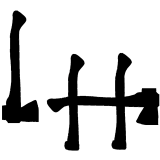
Hoffman Blacksmithing
Growing up in the rural Blue Ridge Mountains of North Carolina I was accustomed to playing outside in the woods and creeks, opening up my mind to creativity. I have always been very hands-on and creative. I would make paper dye with wild violets and mold bowls from clay dug out of the creek banks. Later on I taught myself how to macramé and learned the art of Bonsai. My mother and her family are very artistic and creative with design. My father is a hard working farmer. I believe I have both these attributes, and that when these traits are combined they fit perfectly the description of a blacksmith: hard work mixed with creative spirit. I began blacksmithing in the fall of 2008 at the age of thirteen, starting out with nothing but a pit fire and a trailer hitch for an anvil. Over the last few years I've worked my way up by purchasing new equipment one machine at a time and learning about the craft and science of moving steel. My parents have been extremely supportive in helping me pursue my passion. They gave me a push start by building a small brake drum forge for my fourteenth birthday. My dad took on the project of building my 200 square foot shop over a two-year period. Once this foundation was established, I had my business well under way before graduating from high school. I always get asked how and why I got started in blacksmithing at the age I did. One might think that I saw a blacksmith at a local fair or read about it in school and ran home to try it out. There was no conscious reason why I started, it's just called being a 13 year old boy. There is nothing else to it: It feels innate to me, like I was born to do it. Once I started heating up and hammering on steel, I knew it felt right. Only afterward did I discover what I was doing was called blacksmithing. Today I'm twenty years old and an accomplished blacksmith with seven years of experience. My work has sold to buyers and collectors internationally. In June 2016, I traveled to Brooklyn, NY to appear on History Channel's Forged in Fire. There, I forged a Kora sword and became the youngest to win Forged in Fire against ABS Master Bladesmith Josh Smith.

Oeser, Jared
"Ever since a young age I have enjoyed and collected knives. After many years of using and collecting knives from various makers I felt it was time to start making them myself. I had a few goals when I started making knives. First, I would never call a knife finished until it looked and performed like a knife I would buy and keep. Second, I would make what I like, not what someone else likes. I have been an artist for as long as I can remember. My media of preference has been pencil ever since I was a little tyke. I have studied art and design my entire life and I try to apply the principles I have learned in my knives. I want them to look good, feel good and perform as well as any other knife out there. I stand behind all of my knives. If it does not perform or you just don't like it contact me and I'll take care of you. Making knives is not my full time business. I am a home builder primarily and make knives on the side. I can't really call it a hobby since I charge people money for what I make but it is still an enjoyable pastime for me and I hope it continues to be for many years to come. I first decided to try making knives in July of 2011. I approached my long time friend David Lang and asked him to teach me the ropes. My first experience on a grinder was on his Bader with a 14" wheel. Next I made a knife that would be the basis for my Uinta Bushcraft. It was a full convex blade made from O1. I completed that in August of 2011 and the rest is history. Finally in 2012 I made my first slip joint knife which has always been my end goal. I continue to make both types of knives but my main passion is folders. They are something I use and carry every day and remind of the knives my grandpa used to carry. I try to combine modern materials and techniques with the old traditional style of yesteryear."

Roy (Fiddleback Forge), Andy
Hi, I am Andy Roy, the maker at Fiddleback Forge, LLC. I started making knives in 2007, and went full time May 1, 2009 when I got laid off of my last engineering position. I consider myself a toolmaker, and much of the focus of my work is in the handle. I strive to make the most comfortable handle you?ve ever held. It is important to me that you can hold the knife in many positions comfortably and do hard extended work with the blade. I also think it is important for the handle to index the knife in your hand, so that no matter how you hold it, you know where the edge is without having to look. I use a variety of steels, and my favorite grinds are convex, and Scandi. In 2010 I spent a lot of time developing a finish treatment for the flats of my knives that I call 3D Spalted Steel. It adds a unique character to my blades, and I think it complements the refined handle work well. I am very excited to be working with Arizona Custom Knives, and hope you enjoy the Fiddleback Forge knife you buy from them.


